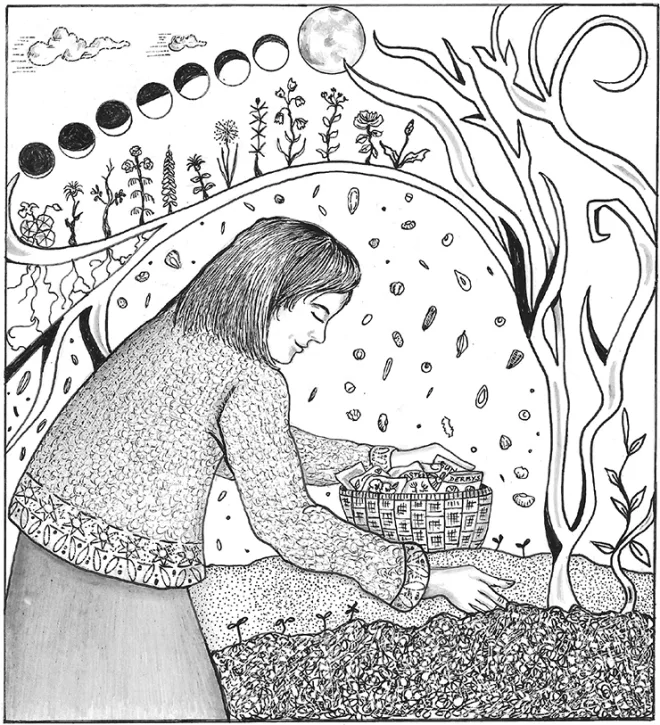Late last Spring there were suddenly potted flowers in bloom for sale everywhere, offering an instant Summer garden. They were very tempting. But I began wondering how they fit in: the birds were only just beginning to nest; the leaves were a tender newborn green. Nature was still full of nascent promise. Did I want to blast Summer onto her?
So I resisted the bright plants and bought seeds instead. My garden remained mostly green with a few shy Spring flowers here and there. The garden center blazed with Summer color, and the seeds I sowed did not make much of a dent, showing only occasional dots of newborn green that didn’t seem to change each time (far too often) I checked on them.
Watching a green dot transform into a luscious plant is such a very different experience from shaking a brilliant flowering plant out of a plastic pot. We live in a busy world where people often feel they need instant gratification. I know two young men whose work is creating garden pots or beds for their clients, who do not even see them until they are complete. They provide seasonal gardens to go along with new Summer wardrobes!
It wasn’t always that way. In former times, gardeners not only sowed seeds, they often saved them from the year before. There weren’t even seed companies—those came along in the 19th century—with their bright packets and instructions on the back as to how and when to plant. Gardeners told each other what to do.

There were other guides, too. “There is a time to plant and a time to pluck that which is planted,“ the Book of Ecclesiastes instructed. Often this might depend on the waxing or waning of the moon. The Elizabethan writer Thomas Tusser directed gardeners to:
Sow peasen and beans in the wane of the moon Who soweth them sooner he soweth too soon That they with the planet may rest and arise And flourish with bearing most plentiful wide
The waxing and waning of the moon was a principal influence on farmers and gardeners. It was thought best to prune and graft at a full moon. Fruit was to be picked during a waning moon. Cato told his Roman readers to spread manure at the waning of the moon, or it wouldn’t sink into the ground.
Times of day were important, too. “In the morning sow thy seeds,” advised the Book of Ecclesiastes. Our forebears believed in sowing aboveground crops (like flowers and most vegetables) in the morning, whereas underground crops (like turnips and potatoes) were best planted at sunset. These latter crops were sometimes planted when the moon’s “horns” were pointing downward—to help direct the crops into the earth.
The growing moon had, it was believed, the power to strengthen crops as it waxed. In the 1584 Discoverie of Witchcraft, Reginald Scot wrote that “The poor husbandman perceiveth that the increase of the moon maketh plants fruitful so as in the fulle moon they are in best strength, decaying in the wane and in the conjunction do entirely wither and fade.“
The moon dictated many church festivals. Good Friday (which occurs at or shortly after a full moon) was a time for planting. At Whitsun, rose petals were thrown and spread to symbolize the descent of the Holy Ghost. After Halloween, it was dangerous to harvest fruit—the devil may have breathed on it.
Some gardeners still plant and harvest with the moon and zodiac signs in mind. Some don’t, and they might agree with the 17th-century writer John Parkinson, who wrote about “rules and directions set down in bookes so confidently, as if the matters were without all doubt and question; whereas without all doubt and question I will assure you that they are mere idle tales and fancies, without all reason, or truth, or shadow of reason or truth.”
Not all my seeds grew abundantly to picture perfection, but enough did to fill me with pride. I had known these lovely plants since they were born, and I had watched them all their lives. Some died, and I mourned them. Some fell over, and I staked them. Some didn’t seem very happy, in spite of my love for them! But some are still filling my life with joy, with the affirmation of hope at their beginnings—showing me that if you believe in the smallest promise, it can, indeed, turn out to be the truth. ❖



